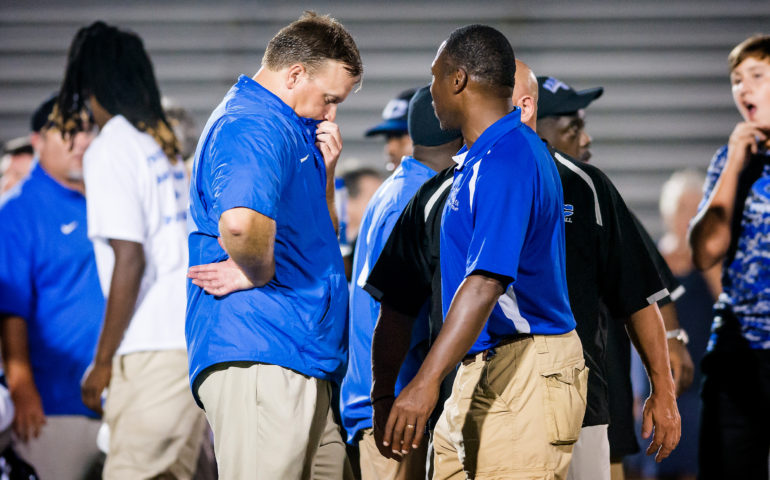It might be a trending hashtag in the world of coaching and coach education, but what does it mean from a planning and practice design perspective?
As coaches, we are responsible for player development and performance improvement, and our ability to plan for practice and competition is critical.
The ability to create and manage a deliberate practice environment demands well-defined and well-designed goals. Deliberate practice should focus on specific targets, not just general improvements. It should enable players to identify, reach and exceed individual and team goals.
RELATED CONTENT: How to learn from learning as a coach
For players to reach and exceed goals, deliberate practice demands that practice takes place outside the player’s comfort zone. Comfort zone literally means a situation where one feels safe or at ease. In sport, it means performing in an anxiety-neutral condition or simply ‘cruising.’ When athletes are cruising, they use a limited set of behaviors to deliver a steady performance, which is notably risk-free. Players may appear to be not trying. Comfort zones exist at all levels of sport.
Comfort zones typically precede a period of learning, as represented below.
 Once a skill has been mastered, it becomes autonomous. Autonomy is associated with anxiety‐neutral competence. It serves as a pre-condition for the next phase of learning. At this point, players step outside and beyond their comfort zone and into the learning zone. They push themselves to a new level of discomfort or unfamiliarity, which can result in an enhanced level of concentration and focus.
Once a skill has been mastered, it becomes autonomous. Autonomy is associated with anxiety‐neutral competence. It serves as a pre-condition for the next phase of learning. At this point, players step outside and beyond their comfort zone and into the learning zone. They push themselves to a new level of discomfort or unfamiliarity, which can result in an enhanced level of concentration and focus.
Depending upon how far athletes are being stretched and challenged, they may experience feelings associated with the cognitive phase of learning where significant conscious attention is required. Movements may feel awkward and fragmented. They may be slow, inconsistent and inefficient.
RELATED CONTENT: Use the three C’s when evaluating your coach-player relationship
The notion that some level of anxiety will have a positive impact on performance is not new. Anxiety improves performance until a certain optimum level of arousal has been reached. This is referred to as the optimal performance zone and would be at the top right hand of the curve in the diagram above.
However, there is a tipping point beyond which performance declines rapidly because of heightened anxiety and people enter the ‘panic zone.’ Feelings associated here manifest themselves as stress, fear, tension, anxiety, frustration, and annoyance. Athletes may well ‘choke’ or perceive they have failed as a result.
Failing is an inevitable feature of learning and one that should be permitted and embraced within the practice environment. Assuming the right amount of stretch and challenge has been set, then the coach must ensure that practice fosters the growth mindset. A growth mindset is a belief that intelligence or ability can change with effort, strategy, and persistence.
RELATED CONTENT: How to become a master communicator as a coach
How you support, guide and especially how you provide feedback will be critical in cultivating the growth mindset. Consider how well you use the following feedback rules:
- Feedback Rule No. 1: Keep it real. Without honest feedback, players don’t know they need to do things differently.
- Feedback Rule No. 2: Following failure, explain specifically what needs to improve and how to improve it. Be specific. Emphasize actions that players have power to change (planning, strategy, attitude, etc.)
- Feedback Rule No. 3: Following success, praise effort and actions, not ability. Praising ability after success makes players vulnerable after failure. For example, “If I’m gifted when I succeed, I must fail because I’m not as gifted as I need to be.”
Comfort zones should be moving targets. They should represent steps in development toward a pre-determined goal that will stretch and challenge the athletes until they master that and they can search for the next growth opportunity.
Your job as the coach is to design the practice environment for players that fosters
#highexepectationshighforgiveness
Sarah McQuade is an independent coach education consultant, owner and director of e.t.c coaching consultants and co-director with The Coach Learning Group. To learn more about accessing how-to coach skills workshops click the Coaching Skills button at www.etcoachingconsultants.com.
Original article found here.

